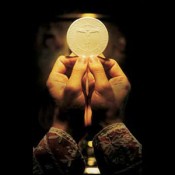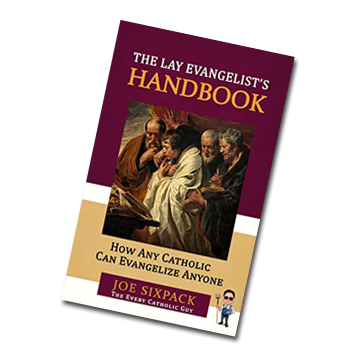Christ Offered And Christ Who Offers The Eucharist

Reception of the Holy Eucharist is never done for the purpose of strict satisfaction of an obligation imposed. Attendance at Sunday Mass is done for such a reason, in order to obey the divine precept to “keep the Lord’s Day holy.”
Errors with regard to the difference between the celebration of the Liturgy and the sacrament which results from its celebration lead to further errors in the administration of the Eucharist.
The “Communion call” to the sick and homebound is not an arbitrary case of “take-out” Eucharist, with more than one possible instance
arbitrarily during a given week except in cases of the administration of viaticum.
It is, rather, a separation of the sacrament of the Eucharist from the liturgical celebration of the Sunday liturgy out of pastoral consideration for those unable to keep the Lord’s Day holy together with the Church through no fault of their own.
In His act of instituting the divine Liturgy, the Lord commanded, “Do this in memory of me.” The action of the liturgy has the aspect of a memorial but one which makes present the One in whose memory we gather and pray.
“The Eucharist is the memorial of Christ’s Passover, the making present and the sacramental offering of his unique sacrifice, in the liturgy of the Church which is his Body. In all the Eucharistic Prayers we find after the words of institution a prayer called the anamnesis or memorial” (Catechism of the Catholic Church, n. 1362).
The fundamental connection between Christ who offers in the liturgical celebration and the Christ offered sacramentally in the Eucharistic Bread flows from His one divine Personhood as God and Man. The faithful maintain a relationship with the Lord which is the purpose of the Eucharist by respecting the inner connection between His liturgical action and His subsiding Presence in the Sacrament of the Altar. The symbolism of the altar itself helps us to realize the inner connection between liturgy and sacrament.
“The altar, around which the Church is gathered in the celebration of the Eucharist, represents the two aspects of the same mystery: the altar of the sacrifice and the table of the Lord. This is all the more so since the Christian altar is the symbol of Christ himself, present in the midst of the assembly of his faithful, both as the victim offered for our reconciliation and as food from heaven who is giving himself to us. ‘For what is the altar of Christ if not the image of the Body of Christ?’ asks St. Ambrose.
“He says elsewhere, ‘The altar represents the body [of Christ] and the Body of Christ is on the altar.’ The liturgy expresses this unity of sacrifice and communion in many prayers. Thus the Roman Church prays in its anaphora:
” ‘We entreat you, almighty God, that by the hands of your holy Angel this offering may be borne to your altar in heaven in the sight of
your divine majesty, so that as we receive in communion at this altar the most holy Body and Blood of your Son, we may be filled with every heavenly blessing and grace'” (Catechism of the Catholic Church,n. 1383).
Reception of the Eucharist is the Gift necessary for building up the state of grace which is a living and growing gift. It is received for this
purpose as an integral part of participation in the Liturgy, even daily if possible.
“The Church obliges the faithful to take part in the Divine Liturgy on Sundays and feast days and, prepared by the sacrament of Reconciliation, to receive the Eucharist at least once a year, if possible during the Easter season. But the Church strongly encourages the faithful to receive the holy Eucharist on Sundays and feast days, or more often still, even daily” (CCC 1389).
Certainly, some pastors have advocated for additional instances of reception during the week for a member of the faithful who, prior to
becoming homebound, had a longstanding devotion to attendance at Mass on a daily basis.
“O Sacrament most holy, O Sacrament Divine, all praise and all Thanksgiving be every moment Thine!”









